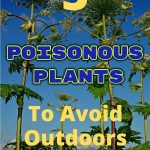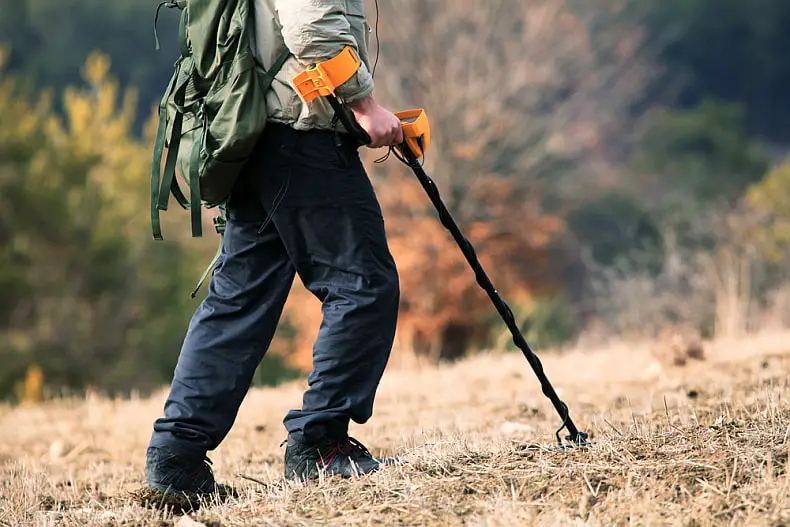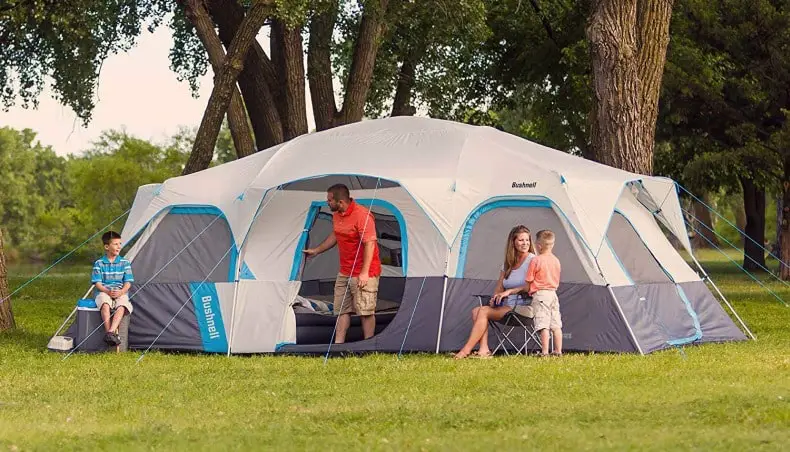Chances are you’ve come in contact with a poisonous plant outside at some point in your life, and it made your skin break out and itchy. It’s one thing for this to happen at home, but when it happens while on a camping adventure, it can make the rest of your trip miserable.
Learning to know and identify poisonous plants you might encounter in the outdoors as well as methods of protection can help you avoid a nasty skin rash and prevent constant itching. Keep reading as we cover some of the most common outdoor poisonous plants you may see while camping.
Table of Contents
Poison Ivy

Toxicodendron radicans, or poison ivy, is one of the most common dangerous plants found throughout the contiguous United States. It contains an oil called urushiol, the toxic substance responsible for the skin reaction that causes red blistering when it is brushed upon.
Poison ivy presents itself in many ways. It can be in the form of a trailing shrub or a vine that climbs a tree or fence post.
Poison ivy has leaf sections of three leaflets which can have either smooth or jagged edges. They can also be pointed or rounded. Some plant leaves exhibit a waxy-looking coating while others do not.
The leaves are generally green in the spring and summer months but turn to red-yellow in the fall.
The urushiol in poison ivy can cause redness, blisters, swelling, and itching in about 85% of people. 15% are immune to its effects. Your dog or cat is not allergic to poison ivy but they can carry the oil on their coat and transfer it to humans.
You can not spread poison ivy from person to person by contacting the blisters of one who has poison ivy. It also can not spread by scratching as the fluid inside of the blisters is not poison.
Poison Oak Plants
Poison Oak comes in two varieties, eastern poison oak, Toxicodendron pubescens, and western poison oak, Toxicodendron diversilobum.
Eastern Poison Oak
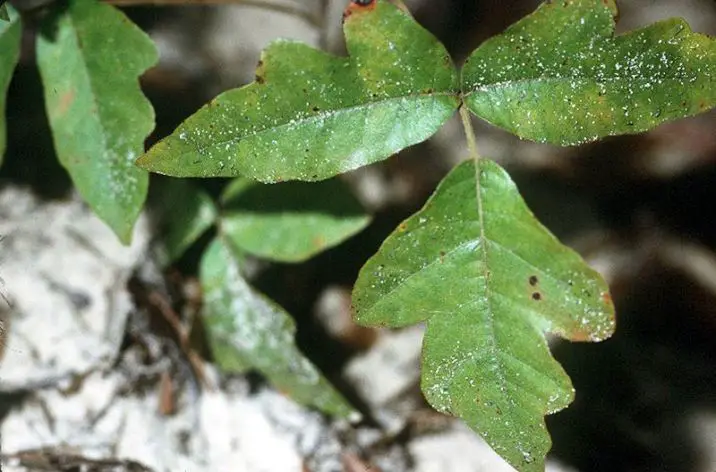
image: Robert H. Mohlenbrock @ USDA-NRCS PLANTS Database / USDA SCS
Eastern poison oak, sometimes called Atlantic poison oak can be found outside in the southeast region of the US. It grows as a shrub up to three feet tall with leaves of three which resemble leaves of a white oak. The leaves and stems possess small velvety hairs. In the fall this plant turns to reddish-orange.
Like poison ivy, urushiol is the oily substance responsible for allergic reactions than cause skin blistering and itching.
Western Poison Oak
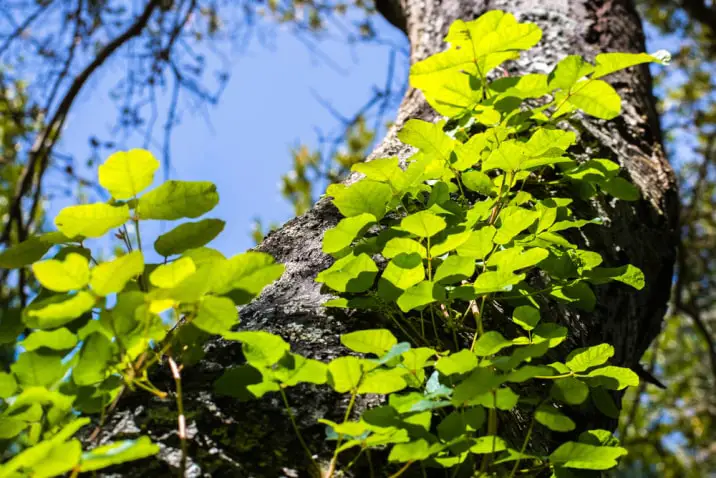
Western poison oak, or Pacific poison oak is found in western North America and can present itself as either a shrub or woody vine. Shrubs usually grow from 2 to 6 feet tall, and vines can grow up to 100 ft long. The leaves usually resemble oak leaves and grow in sets of 3 leaflets.
This plant varies in color from depending on the season. It can start as a bronze color, turning to bright green in the spring. In the summer they tend to turn greenish-red and a pretty, bright pinkish-red in the fall.
Again urushiol is the component which causes the skin reaction when contact is made.
Poison Sumac
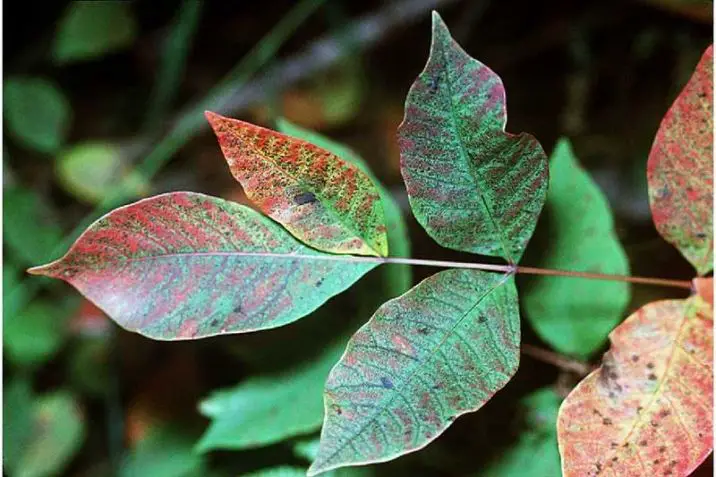
Poison sumac, Toxicodendron vernix, is a poisonous plant found outside in the eastern United States and extreme southeatern Canada. It grows as a small tree or shrub and prefers wet swampy areas. Each stem is a reddish color and has 7-13 leaflets which are oblong or oval and taper to a point. The leaves are green, turning red or orange in the fall.
The urushiol in sumac is more potent than that found in poison oak and poison ivy and is more likely to cause a rash when touched.
[callout]
How To Treat For Poison Ivy, Poison Oak, and also Poison Sumac Exposure
- Wash the affected area with soap and cold water
- To reduce itching apply calamine lotion, hydrocortisone cream, a topical antihistamine, or an anesthetic containing benzocaine
- Oral antihistamine products such as diphenhydramine (Benadryl) may be used
- Avoid scratching to help prevent of infection
- Seek medical attention if rash becomes infected or affected area is near the eyes
[/callout]
Giant Hogweed
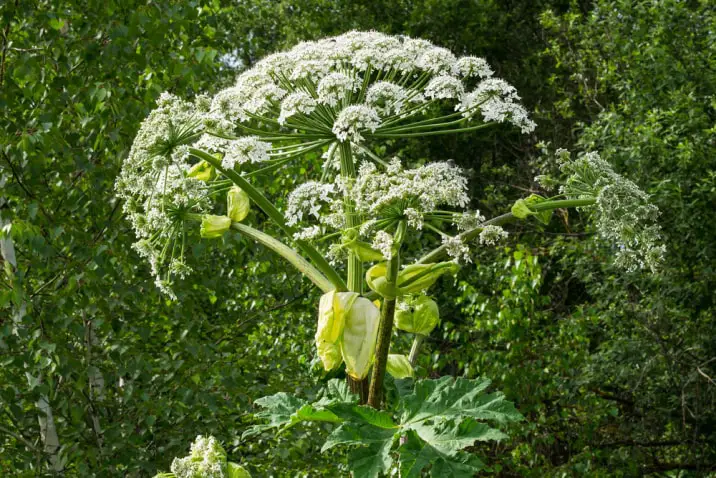
Giant hogweed, Heracleum mantegazzianum, is native to Eurasia but has made its way to the US and Canada. It is generally found in New England, the Mid-Atlantic Region and the Northwest.
The sap of the giant hogweed contains photosensitizing furanocoumarins which can cause severe blistering and permanent scarring when it comes in contact with the skin in the presence of sunlight so its very important to avoid this plant. A reaction can occur a quickly as 15 minutes after contact and painful blisters can form within 48 hours. Moisture, such as in the form of sweat can worsen the effects.
If you see this plant outdoors, do not touch it! Report it to the department of conservation in the applicable state for removal.
[callout]
How To Treat For Giant Hogweed Exposure
- Wash the affected area thoroughly with soap and cold water
- Cover the area to protect from sunlight for 48 hours
- Seek medical attention if blisters form or if sap gets into eyes
- If a reaction occurred you may want to use sunblock on the affected area as it may be overly sensitive to sunlight for several years.[/callout]
Prevention
There are ways you can prevent the effects cause by poisonous outdoor plants.
Long sleeves and long pants can act as a protection barrier to help keep the oil of the plant from contacting your skin. Barrier creams may also offer some protection.
Avoidance is always the preferred method of dealing with dangerous plants. Learning to accurately identify these plants can be tricky as they can vary so much depending on the region and the season. Start taking notice when in the woods to see if you can identify some of these.
You can also contact your local county extension office for poisonous plants common in your area.
For more info on poisonous plants, read the guidelines from the CDC at The National Institute for Occupational Safety and Health – NIOSH.


